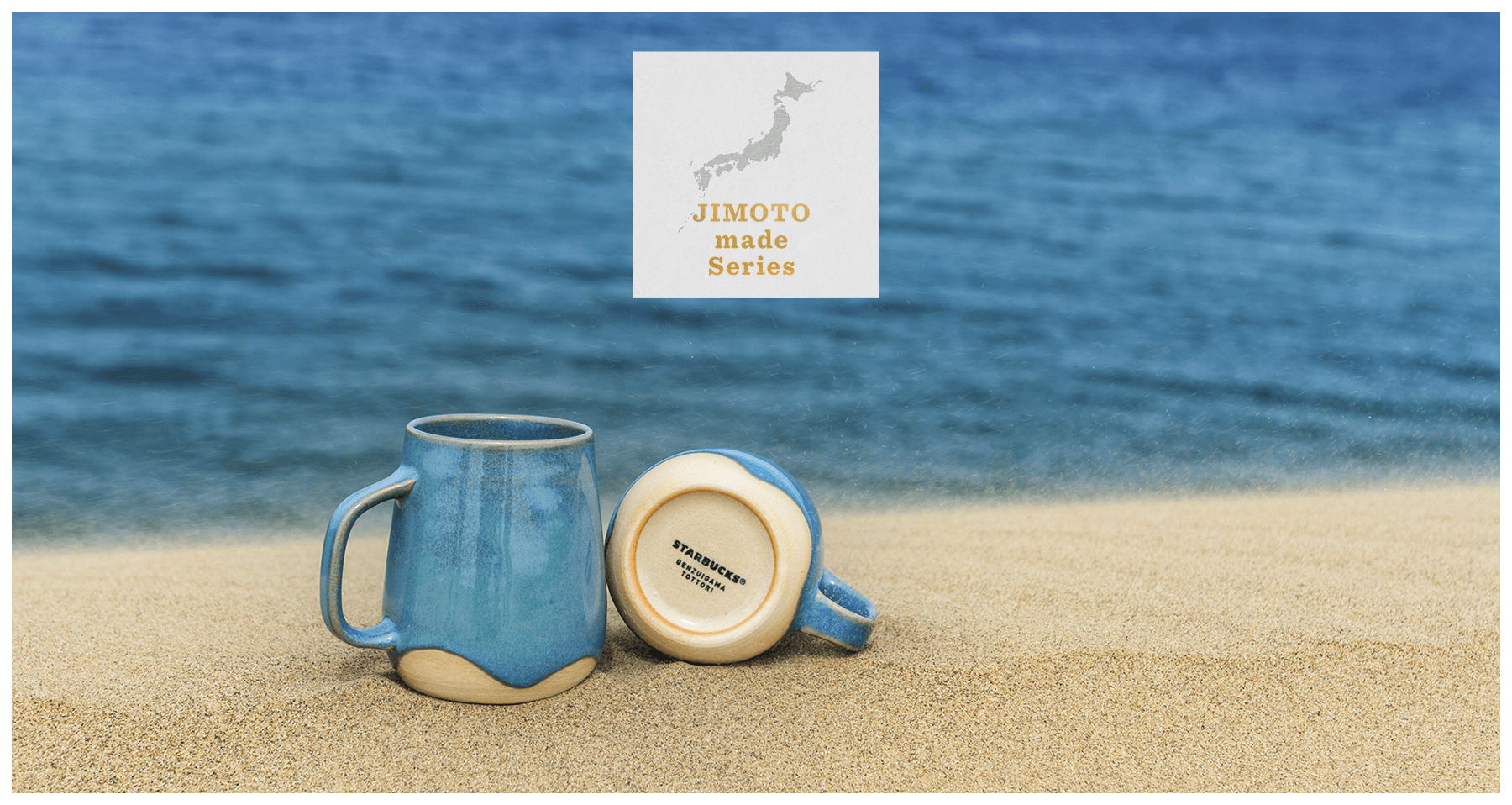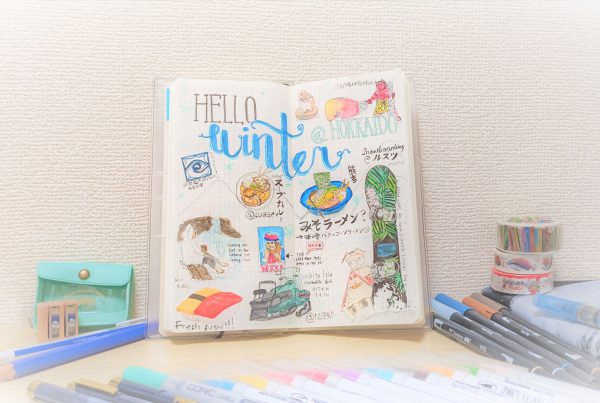When speaking about successful companies who have “glocalized” well in their new market, Starbucks often comes to mind. From seasonal offerings like Pumpkin Spice Latte served in fall season in the US to Sakura Latte in spring season in Japan, Taiwan’s Golden Pineapple Cold Brew Coffee to Malaysia’s Mixed Berry Frappuccino Blended Beverage with Pomegranate Pearls, Starbucks have a lot to offer. These are some examples of glocalization, combining both concept of “globalization” and “localization” into one.
Glocalization often achieve better results due to the understanding of the local needs of the market whilst bringing in the essence of a global brand. Starbucks is no stranger to the concept, being the largest coffee chain in the world (in terms of revenue) and being present in 83 countries and having 32,660 stores worldwide.
Where does Japan fit in this glocalization strategy?
The Success of Starbucks in Japan
Japan is ranked #3 with 1464 Starbucks stores nationwide, after the U.S.A. and China as of September 2020. Starbucks Japan also houses the largest Starbucks Reserve Roastery outside the U.S.A. What makes Starbucks a highly successful brand in Japan?

The map of Japan. Image via Adobe Stock.
The key to business success for international brands entering a different market lies in the ability of the brand to foster good relationship with the local community. Norio Adachi, the Corporate Affairs Director of Starbucks Japan attributes the company’s success to the respect shown for the culture of the local community in an interview with The Japan Times.
Taking it one step further, Starbucks Japan integrates the local culture into its product offering, making it a highly successful glocalized company.
Iconic Starbucks Outlets in Japan
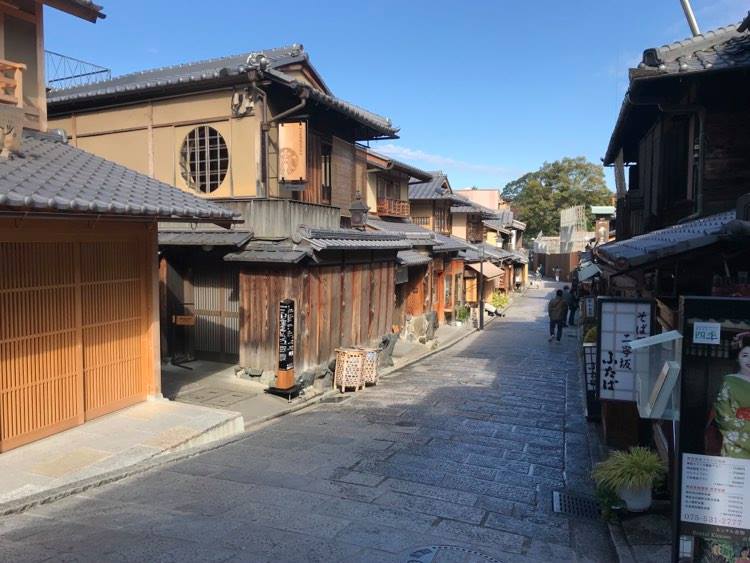
The first Tatami Starbucks in the world in Kyoto’s Ninenzaka. Image by the author.
Starbucks Japan opened its first Tatami Starbucks in 2017. The Kyoto Ninenzaka Yasaka Chaya is the first of its kind in the world, offering guests an opportunity to experience Starbucks in a traditional setting. With the World Heritage Site Kiyomizudera within the vicinity, this Starbucks outlet would usually be crowded during the weekends and peak hours in the day.
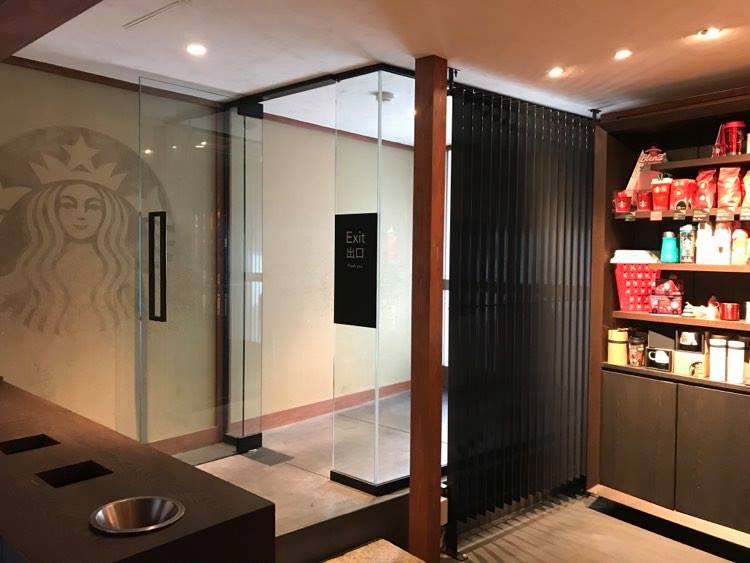
The interior of Kyoto Ninenzaka Yasaka Chaya. Image by the author.

Having a sip in the Tatami room, overlooking the ‘tokonoma’, the architectural feature of the room. Image by the author.
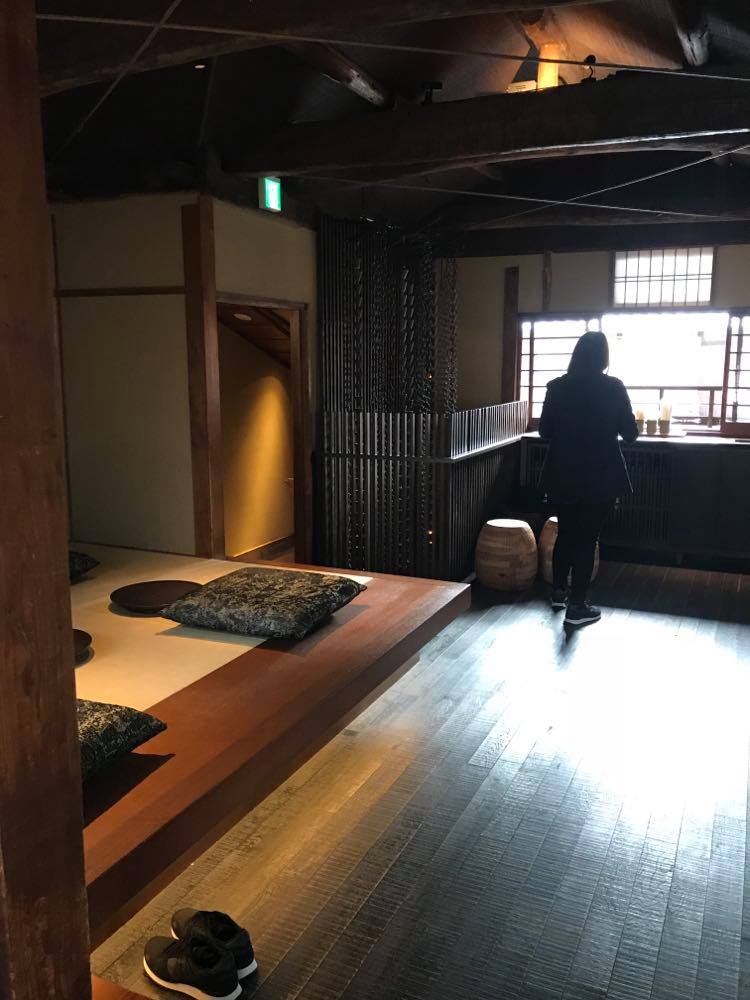
The Chaya offers different ambience. Some rooms come with chairs, while some others come with Zabuton, the cushion. Image by the author.
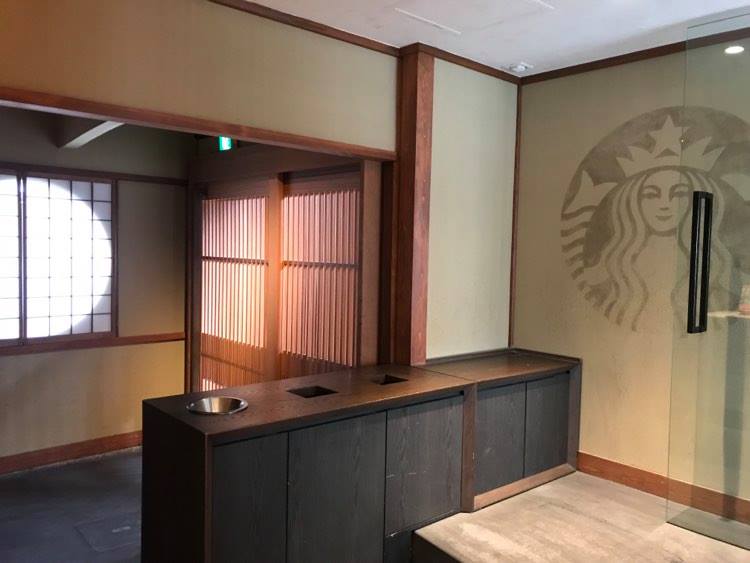
The interior of Kyoto Ninenzaka Yasaka Chaya. Image by the author.
Starbucks Japan is also home to the largest Starbucks Reserve Roastery outside of the United States. Located by the Meguro River, the 4-storey building was designed by world-renowned Japanese architecture, Kengo Kuma. The first floor features the souvenirs section, coffee, as well as an Italian bakery. The second floor is dedicated to tea lovers, featuring Starbucks’ signature Teavana. Alcohol is served on the third floor of this Roastery, whilst the fourth floor is a wide lounge for customers to dine in and enjoy.
Starbucks Reserve Roastery at Meguro, Tokyo. Video by Kantan Japan via YouTube.
"JIMOTO 地元": Focusing on Local Offerings
The term “Jimoto” is a combination of two kanji characters, 地 (ji) which means ground or earth, and 元 (moto) which means the beginning, former time, or origin. According to JLearn.net, Jimoto means home area, home town, or local.
Japan is a highly-regionalized country with 47 prefectures and a lot of diversity in agriculture from the northernmost part of Hokkaido to the southernmost part of Okinawa. As a recent article on the Nagaoka Review discussed Japan’s interest in all things “limited edition”, Japan is an interesting country for an innovative and creative country for a company like Starbucks to expand.
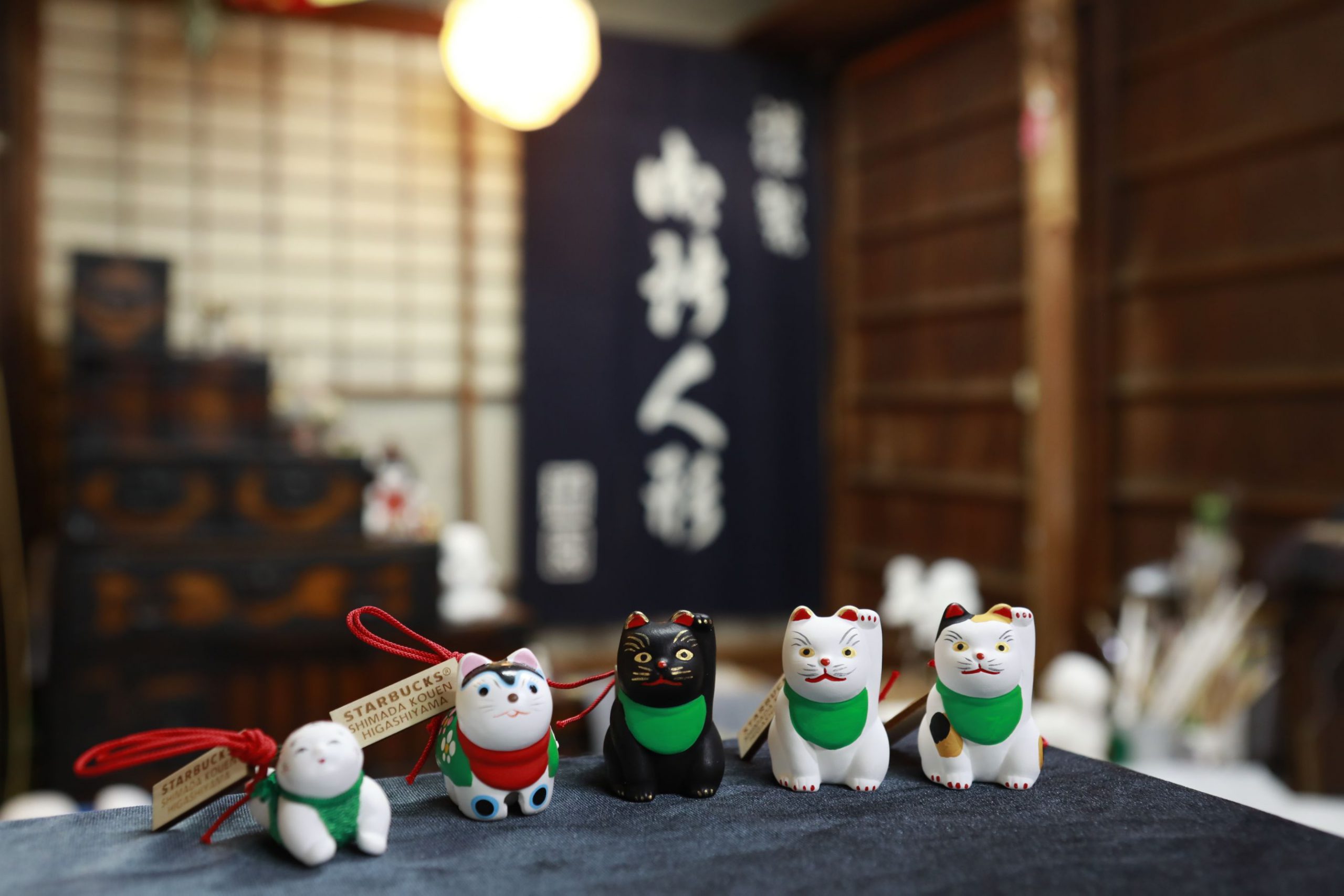
Only available in 3 stores in Kyoto: Lucky charm in a “Fukudama” capsule, a tradition only practiced in the Higashiyama area (Gion) of Kyoto. Image via Starbucks Jimoto.
While the “jimoto” concept may be unique, businesses do not become successful due to the concept of regionality. Businesses have to expand beyond respecting the culture to integrating their brand with the local culture and community for stronger impact.
Integrating the Starbucks brand with the local offerings would bring forth a unique union with Starbucks lending its brand name in the global media to the local offering, and the local brand attracting more attention within the local community.
Starbucks Japan's Jimoto made Series
With Starbucks Japan, the rule of the thumb for all Jimoto items sold is very simple. The items can only be purchased at selected stores within the particular region. To avoid disappointment, it is best to call the listed store(s) beforehand to ensure the availability of the Jimoto product.
With that in mind, Starbucks Japan initiated a collaboration with local artisans from 14 local areas to create locally crafted coffee mugs and items to be sold at selected regional stores.
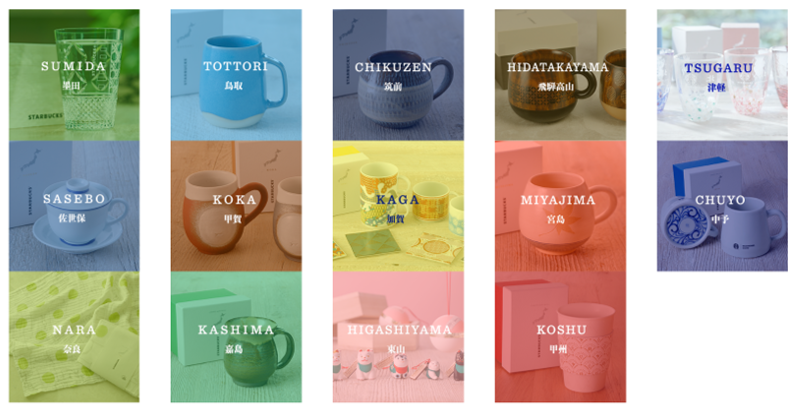
Starbucks Jimoto Series: The 14 unique locally designed coffee mugs. Image via Starbucks Japan.
One example is the Mikawachi 177ml mug manufactured in Sasebo, Nagasaki. This unique coffee mug is designed and made by the Kasengama pottery studio with over 400 years of history. Sasebo is well-known for porcelain ware known as Mikawachi ware. The anchor in the cup symbolizes the city’s history as a port city. This limited edition mug is only available at two locations, Sasebo Yokkamachi store, as well as Sasebo Fifth Avenue store.
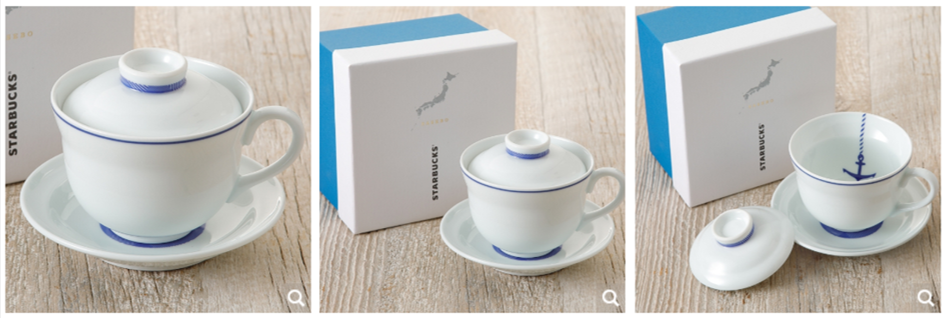
Starbucks Jimoto Series: SASEBO Mikawachi 177ml. Image via Starbucks Japan.
Another case in point is the unique blanket sold at Nara. Nara is well-known for its special “coarse weaving” technology that was used to create coarse fabric, traditionally used as mosquito nets. With the decline in demand for mosquito nets, the industry moved on to creating fabric to be used in daily life such as towels, dish drying cloth, and more.
Starbucks Japan teamed up with Yamato Orifu Co. Ltd., a company specializing in the traditional technology of coarse weaving to come up with a unique offering. The end result? The “5-layer gauze blanket” that gets softer with each wash. Thanks to its coarse weave, the fabric retains its breathability, making it suitable for use in the humid summer in Japan.
The blanket features the famous deer in Nara, as well as the iconic Starbucks cup. It is available at 7 Starbucks store in Nara; Nara Gakuenmae Station Store, Nara Saidaiji Station Store, JR Nara Station Old Station Building Store, Nara Konoike Athletic Park Store, Nara Park Bus Terminal Store, Nara Tsutaya Bookstore and Nara Sarusawaike Store.
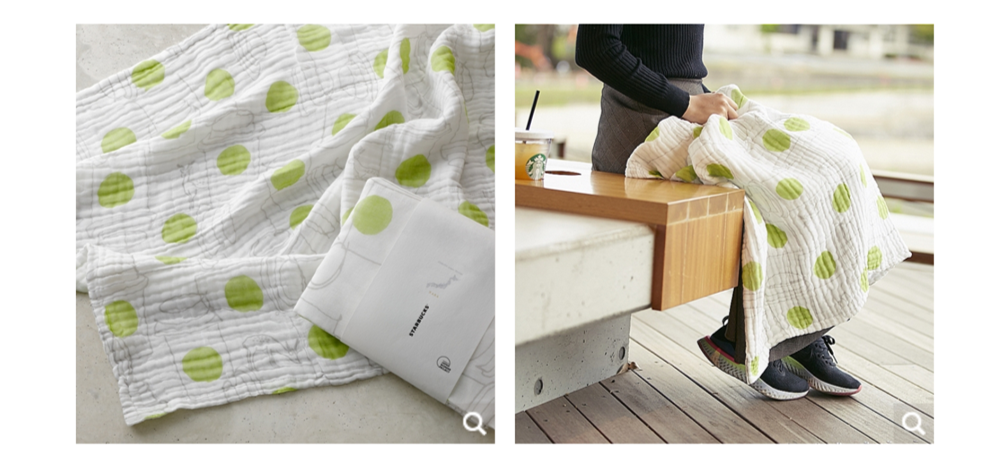
Starbucks Jimoto Series: NARA “5-layer woven blanket”. Image via Starbucks Japan.
Latest Jimoto Series
In conjunction with Starbuck’s 25th anniversary in Japan, Starbucks Japan introduced the 47 Jimoto Frappuccino, each to be sold only in the prefecture the store is located in. Designed by the local partners (employees) of each prefecture, the 47 variants of Frappuccino utilizing local ingredients from each prefecture.
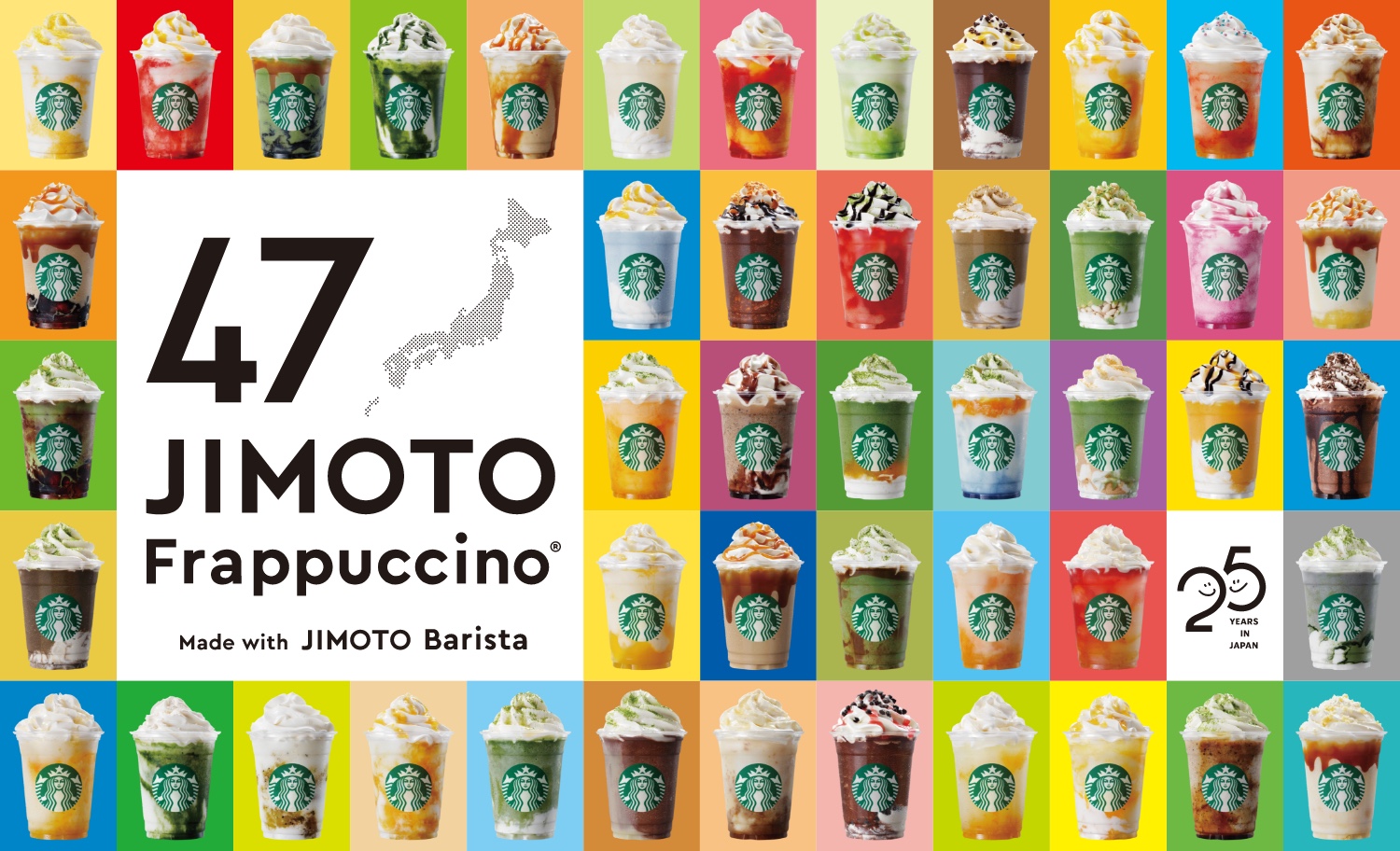
25th Anniversary of Starbucks Japan, the 47 Jimoto Series. Image via Starbucks Japan.
On 30th June 2021, Starbucks Japan introduced the 47 Jimoto Frappuccino, introducing 47 variants of Frappuccino utilizing local ingredients from each prefecture. The items became an instant hit with the hashtag #47jimotoフラペチーノ trending on social media such as Twitter and Instagram, with Instagram hitting over 12,000 posts on the 7th day since the release of the product. While the promotion was scheduled to run till the 3rd August 2021, sales of the said Frappuccino would end as soon as it is sold out.
A survey was conducted by J-Cast News asking its viewers to rank the products in the order of preference from the drink they’d like to try most. Saitama’s “colorful sugar ball sprinkles” Tasaitama Strawberry & Citrus Frappuccino dominates the no.1 on the list, with mostly fruit-based drinks being more popular. Unfortunately, many other offerings with keywords such as “Matcha” or “Citrus” did not make the cut. Sadly, Shimane leads from the back of the list at no.47 with its Creamy Matcha and Coffee drink, followed by Tottori’s Creamy Caramel Frappuccino drink at no.46.

An early ranking survey conducted by J-Cast News. Information via Yahoo Japan. Image by author.
While the results from J-Cast News is a poll with10,246 votes collected, only time will tell if the limited edition offerings would indeed meet its consumers’ expectations.
Starbucks Japan should involve the local baristas and some local consumers in the post-mortem after the end of the promotion to evaluate the successes and challenges of the offerings. Hopefully the team can be inspired by the findings to continue creating more delectable and Insta-worthy products using ingredients that are more unique to capture the interest of the consumers!
The Future of Starbucks Japan
Starbucks Japan is a good example of an American company doing very well with glocalization. Besides products, the company has also undertaken a lot of effort to create good atmosphere that consumers enjoy.
Since before the pandemic, gastronomy has been an important aspect that impacts tourism. From research conducted at Zile District, Tokat Province in Turkey to Hong Kong, gastronomy has proven to be an important factor in enhancing the experience of tourists in these places. However, ever since the COVID-19 pandemic started, S&P Global Market Intelligence has listed the airlines industry as being at the top of the list of most adversely-impacted industries alongside restaurants and leisure facilities. These three industries collectively contribute significantly to the tourism industry. Only time will tell what the future holds for the tourism industry.
It is with hope that Starbucks Japan could be at the forefront of promoting local regions and its unique offerings to boost the local economy, be it food or traditional craft.

